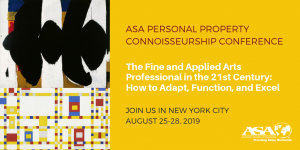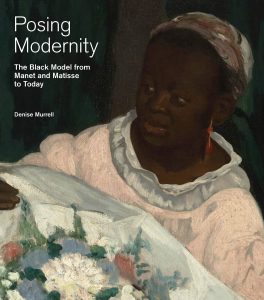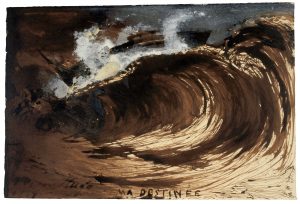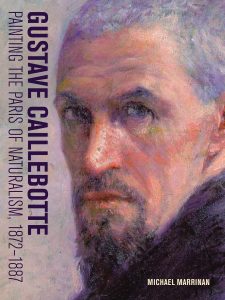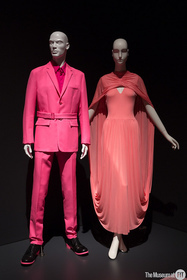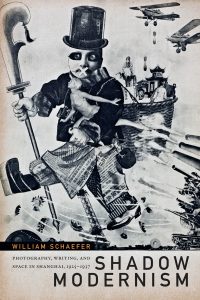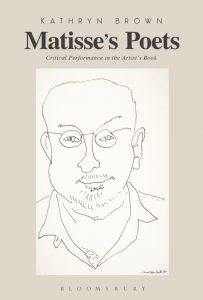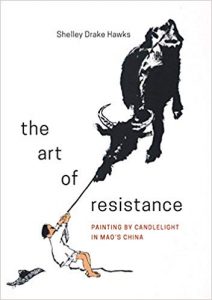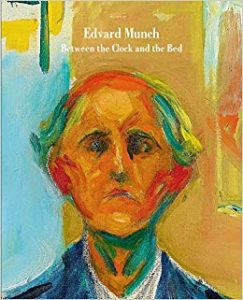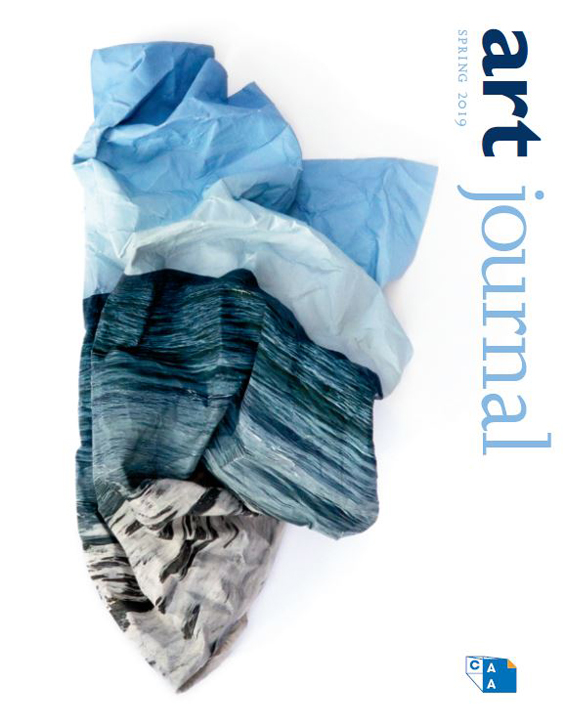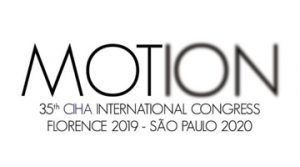CAA News Today
Affiliated Society News for June 2019
posted Jun 06, 2019
Affiliated Society News shares the new and exciting things CAA’s affiliated organizations are working on including activities, awards, publications, conferences, and exhibitions.
Interested in becoming an Affiliated Society? Learn more here.
American Society of Appraisers
The 2019 ASA Personal Property Connoisseurship Conference – NY will be held at the Marriott Marquis centered in the heart of New York City. With a focus on The Fine and Applied Arts Professional in the 21st Century: How to Adapt, Function and Excel, this intensive three-day conference will provide hard-to-obtain insights into key topics and issues facing personal property appraisers and other art industry professionals. Connect with experts, scholars, and allied professionals from across North America. Presenting speakers include individuals from the industry media, specialty auction houses, galleries, museums, and academia, among others. Register here: http://www.appraisers.org/Education/conferences/personal-property-conference
Association of Art Museum Curators (AAMC)
ASSOCIATION OF ART MUSEUM CURATORS FOUNDATION
Join us this June for a series of three webinars that will restructure and rethink how we consider the topic of management. By focusing on Navigation, Environment and Advancement, the webinars will break with the traditional hierarchical and vertical manner in which conversations around management are typically approached. Each program will present dialogues relevant to all career stages, and will consider ways in which the topic can impact sense of self, well-being, and personal success.
Webinar 1: Navigation – June 11, 2019
Webinar 2: Environment – June 18, 2019
Webinar 3: Advancement – June 25, 2019
Organized and hosted by the AAMC Foundation the series is open to all, with AAMC members receiving discount admission. Limited space is available, register today!
ASSOCIATION OF ART MUSEUM CURATORS (AAMC) & AAMC FOUNDATION
AAMC members are invited to Submit a Session Proposal for the 2020 AAMC & AAMC Foundation Conference, slated for May 2 – 5, 2020 in Seattle, WA. We are seeking proposals on the topic of advancing curatorial work and art organizations beyond traditional and perceived thresholds and boundaries. In selecting this topic, we anticipate dialogues reconsidering linear narratives, challenging concepts of borders, investigating social and cross cultural interactions, and engaging in activism.
We request proposals considering the full spectrum of interpretations, looking at possible topics holistically and not solely through the curatorial lens. Sessions should propose discussions acknowledging community, which involves our workplace colleagues and partners; donors and sponsors; visitors and neighbors; for-profit arts sector; and more. As with all our programming, the proposals should be inclusive and welcoming of a diverse audience. Review the full guidelines and submit your session proposal before 5PM ET on Monday, June 24, 2019.
ASSOCIATION OF ART MUSEUM CURATORS FOUNDATION
Applications are open for AAMC Foundation’s Mentorship Program, which gives early- to mid-career curators opportunities to advance their professional development, learn about important issues in the field, share ideas and cultivate strong bonds with peers, and develop a working relationship with a senior curator. The program’s goal is to advance the skills, experience and knowledge needed to succeed in a curatorial career, not specifically develop a singular curatorial or scholarly project. All Mentees are provided funding to accommodate program components, including travel and other benefits, which are outlined in greater detail here. A group of curator jurors will select ten mentees for 2019-2020 Program, with Mentees and Mentors announced this July.
Applications are due by 12PM ET on Tuesday, June, 25, 2019. Click here to learn more and submit your application today!
Association for Latin American Art (ALAA)
ALAA Awards
In addition to the annual book award, ALAA announces two new awards. See the links for details.
ALAA-Arvey Foundation Book Award
ALAA-Arvey Foundation Exhibition Catalogue Award
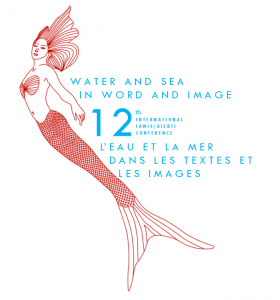
International Association of Word and Image Studies (IAWIS)
CFP for the 2020 Conference in Luxembourg: https://waterandsea2020.uni.lu/program/
American Institute for Conservation
Following a successful Annual Meeting in Connecticut, we are looking forward to our 2020 Annual Meeting in Salt Lake City! The theme will be “Conservation – Reactive and Proactive.” The call for papers will open later this summer, please continue to check our site for updated information.
If you are interested in learning more about conservation and supporting the essential work performed by conservators and preservation professionals, become a Friend of Conservation! Friends receive exclusive insights into conservation, including tips on preserving personal collections, and sustain key programs that promote the preservation of all cultural heritage. Learn about the benefits of being a Friend and how you can help save the art and artifacts that keep our memories alive. Support the Foundation for Advancement in Conservation through www.culturalheritage.org/friends.
International Sculpture Center
Sculpture magazine is thrilled to announce its new website. Go to www.sculpturemagazine.art for reviews, features, news, videos, and other daily content.
Attend workshops, studio tours, and network with artists at the 29th International Sculpture Conference in Portland, OR. Registration opens June 11th at www.sculpture.org/portland19.
Society of Architectural Historians
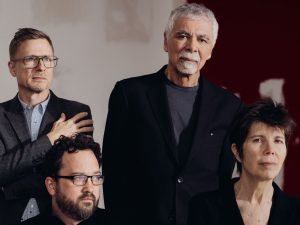
Photo: Geordie Wood, courtesy of DS+R
The Society of Architectural Historians will present the inaugural SAH Change Agent Award to the partners of the New York architecture firm Diller Scofidio + Renfro—Elizabeth Diller, Ricardo Scofidio, Charles Renfro and Benjamin Gilmartin—at a reception at the Century Club in midtown Manhattan on July 17. The award recognizes DS+R for their innovative, paradigm-shifting work, which takes an interdisciplinary approach to design with a focus on cultural and civic projects. Proceeds benefit SAH educational programs and publications, and the ongoing restoration SAH’s landmark headquarters, Charnley-Persky House (1891–1892), designed by Adler and Sullivan with Frank Lloyd Wright.
Nominations for the SAH Publication Awards and the SAH Award for Film and Video are open through July 31. The Publication Awards recognize the most distinguished publications in architectural history, urban history, landscape history, preservation, and architectural exhibition catalogues. The SAH Award for Film and Video was established in 2013 to recognize annually the most distinguished work of film or video on the history of the built environment.
The SAH Board of Directors seeks nominations for the 2020 class of SAH Fellows, those professionally active or retired individuals who have distinguished themselves by a lifetime of significant contributions to the field of architectural history. Deadline August 1.
The SAH Nominating Committee seeks your nominations for five new SAH Board members and a Second Vice President who will begin their terms after the Seattle annual conference in April/May 2020. Deadline August 1.
Graduate students and emerging scholars are invited to apply for the SAH Study Program Fellowship to attend the SAH Field Seminar to Japan, December 6–18. The tour will be led by Ken Tadashi Oshima. The fellowship covers the single occupancy price of the tour and includes a travel stipend. Deadline August 2.
SECAC
On behalf of the SECAC Nominating Committee, First Vice-President Lawrence Jenkens announced that the 2019 SECAC election results have been finalized. The following members have been elected to the SECAC Board of Directors for a three-year term of appointment. For Arkansas, Dito Morales, Associate Professor of Art History at the University of Central Arkansas, was re-elected to a second term. For Florida, Jeff Schwartz, Dean of Undergraduate Studies and Associate Vice-President of Academic Affairs at Ringling College of Art and Design was elected to his first term. For Mississippi, Elise Smith, Professor of Art History and Sanderson Chair of Arts and Sciences at Millsaps College in Jackson, Mississippi, was elected to her first term. Smith previously served on the SECAC Board of Directors from 2000 to 2006. For Tennessee, Christina Renfer Vogel, Assistant Professor of Painting and Drawing at the University of Tennessee at Chattanooga and 2019 SECAC Conference Co-Director, was elected to her first term. For the First At-large Seat, Dennis Ichiyama, Purdue Univeristy Professor of Graphic Design emeritus, was re-elected to a second term. The SECAC Nominating Committee thanks all members who ran for Board seats this year.
Association of Greek Art Historians (EEIT)
The Association of Greek Art Historians (EEIT) hosted a number of distinguished speakers in the context of its 2019 Lecture Series. The aim of the series is to engage a broader audience and promote the discipline of art history in the wider public sphere in Greece. The topics ranged from global art history to the art of the periphery, addressing theoretical and methodological issues of contemporary relevance. Concurrently, novel interpretations of modernism were proposed from the vantage points of both the center, a eurocentric perspective, and the periphery, the lens of the ‘european other.’ James Elkins, E.C. Chadbourne Professor at the School of the Art Institute of Chicago, talked about the “The End of Diversity in Writing about Art” (January 11, 2019, Benaki Museum, 138 Pireos St., Athens, Greece). Elkins proposed that despite recent interest in global artistic production, writing about art is primarily characterized by a hegemony of western theoretical discourses and related practices. Mark Crinson provided an enhanced reading of modernist architecture through the ideals of internationalism in a lecture entitled “Babel as Modernism” (April 11, 2019, Athens School of Fine Arts, Athens, Greece). Mark Crinson is professor of architectural history at Birbeck, University of London and president of the European Architectural History Network (EAHN). Matthew Rampley shared initial thoughts and material related to the European Research Grant project Continuity / Rupture: Art and Architecture in Central Europe 1918-1939 that he is currently leading from Masaryk University in Brno in the Czech Republic. The lecture was entitled “A Legacy of Empire? Art and Architecture in Central Europe after 1918” and examined how ‘modernist’ art was deployed in Central Europe to create and enforce national identities at the aftermath of the collapse of the Habsburg Empire after the First World War. (May 17, 2019, National Hellenic Research Foundation, Athens, Greece).
Design Incubation
Calls for Participation: Design Incubation Upcoming Events
Call for Entries: 2019 Communication Design Educators Awards
An international juried competition of communication design research, practice, teaching, and service. Expand the design record, promote excellence, and share knowledge in the discipline. Submit your creative work, published research, teaching, and service. Nominations are accepted until July 31, 2019. Entries are currently being accepted until August 31, 2019.
Visit the 2019 Design Incubation Communication Design Educators Awards announcement to read about our distinguished jurors.
Colloquium 6.1: Quinnipiac University, Call for Submissions
Call for design research presentation abstracts. Deadline: Saturday, July 6, 2019. Hosted by Courtney Marchese and the School of Communications.
School of Communications
Quinnipiac University
Sat, October 5, 2019
10:00 AM – 5:30 PM
A Day of Writing
Come spend an uninterrupted day working on a writing project. Participants will spend the day writing or conducting preliminary work on a writing project. The Day of Writing is open to design faculty and to those working in related fields.
Quinnipiac University
October 6th 2019
10:00am –4:00pm
The Design Incubation Residency at Haddon Avenue Writing Institute 2019
Rolling acceptances until Sept 30, 2019. Only 14 seats are available for this event. This 3-day residency allows researchers and scholars time to work on existing writing projects or to start a new writing project. It offers participants concentrated time to work on writing projects and the opportunity to take advantage of one-on-one consultations with event facilitator Maggie Taft.
Haddon Avenue Writing Institute
2009 W. Haddon Ave, Chicago Illinois
October 25-27, 2019
Visual Resources Association
Approximately 200 information professionals gathered in LA’s Little Tokyo for the VRA conference from March 26-29, 2019: http://www.vraweb.org/conferences/vra2019/. Many conference presentations have been uploaded to SlideShare at https://www.slideshare.net/VisResAssoc and photographs from the events can be found at https://www.flickr.com/groups/vra_events/. The VRA’s journal of professional practice is expecting articles based on conference presentations to be in the June issue of the VRA Bulletin, which is now an open access online journal, see: https://online.vraweb.org/vrab/
Visual Resources Association (VRA) is a multidisciplinary organization dedicated to furthering research and education in the field of image management within the educational, cultural heritage, and commercial environments. For more information on VRA: http://vraweb.org/.
Call for Proposals
The Visual Resources Association’s 2020 Annual Conference will be held in Baltimore, Maryland from Tuesday, March 24th through Friday, March 27th, 2020 at the Royal Sonesta Harbor Court Baltimore.
Presenting at the VRA Conference provides you with the opportunity to see how your ideas, research, work, and passion connect to those of other dedicated professionals while building networks and friendships in an open, collaborative environment.
Click here to access the conference proposal form.
The VRA Executive Board is soliciting proposals for papers, sessions, special interest/user groups, and workshops for the 2020 program until Friday, July 19th. All proposals are welcome, and if you have other conference ideas or suggestions that do not fit the conference proposal form, please reach out to the Vice President for Conference Program, Sara Schumacher. Please note a call for Lightning Round presenters will go out in the fall/winter, so that we can better accommodate recent innovations and activities, as well as, students and emerging professionals.
A paper is an individual idea submission, which will be reviewed for possible grouping into a session. Your ideas, whether they come to us alone or in a group, are equally valued in the Board’s proposal and selection process.
- A session is a maximum 60-minute moderated panel, usually consisting of no more than 3 presenters each, speaking for 15 to 18 minutes, followed by a brief facilitated question and answer period. If you feel your session topic requires more time, consider dividing it into two sessions, consisting of a Part I and a Part II.
- A special interest/user group is a 60-minute informal, community -driven, facilitated group discussion on topics related to a specific segment of the VRA membership.
- A workshop is a 2, 4, or 8-hour workshop to develop skills and experience in the field of visual resources with hands-on activities.
What should you propose?
Past conference schedules can give you an idea of the range of topics presented in previous years or read through the list below of suggested topics compiled from the 2019 post-conference survey responses to find inspiration. Please, do not be afraid to deviate and propose something new or highlight an area of concern that you feel has not been adequately addressed previously, as you may find new collaborators and colleagues. Moderators may put out calls for presenters within a proposed topic before or after the submission of a proposal. The VRA Executive Board will be looking for articulate and concise submissions with lists of presenters, but submissions without presenter lists are encouraged as well.
Suggested topics:
- Coding (PHP, Python, SQL, etc.)
- Community Outreach
- Copyright/Intellectual Property
- Digital Asset Management, Digital Curation, Digital Preservation, etc.
- Digitization (Workflows, Digital Capture and Imaging Technologies)
- Digital Scholarship and Digital Humanities
- Diversity, Equity, Inclusion, Cultural Competencies, Social Justice
- Project Management (Communication, Grant writing, Prioritization, Leadership, etc.)
- Linked Data
- Materials/Objects collections
- Metadata/Cataloging Ethics (Decolonizing vocabularies, Radical cataloging)
- Storytelling and Oral History
- Technologies (GIS and mapping, 3D imaging, etc.)
- Tools: Open Source, Evolution, Future Trends
- Workplace cultures and professional transitions (academic departments, libraries, cultural heritage institutions, archives, corporate, etc.)
Please contact the Vice President for Conference Program, Sara Schumacher at vpcp@vraweb.org with any questions or concerns.
Again, the proposal deadline is Friday, July 19th, 2019. Click here to access the conference proposal form.
Association for Textual Scholarship (ATSAH)
Members’ Publications and Events May 2019
Publications
Bosch, Lynette M.F. Demi. Skira Publishers, 2019.
Bosch, Lynette M.F. ” The Cuban-American Exile Vanguardia: Towards a Theory of Collecting Cuban-American Art, ” Picturing Cuba: Art, Culture and Identity on the Island and the Diaspora. University of Florida Press, 2019.
Bosch, Lynette M.F “Before 1962: Mannerism and Historiography,” Renaissance Society of America Annual Conference, Toronto, Canada (2019).
Bosch, Lynette M.F. Curator, SUNY Geneseo, “Cuban-American Art and Cultural Identity,” April 3-May 4, 2019
Bosch, Lynette M.F. Curator, Binghmaton University, “Visions and Imagination: Cuban-American and Argentinian Art,” January 31-March 14, 2019.
Carrara, Eliana “Vasari e Ammannati nel Cantiere della Villa Medicea di Castello: Due Disegni del Metropolitan Museum of Art in New York,” in Opus Incertum (2018) pp. 44-53 | ISSN 2239-5660 (print) ISSN 2035-9217 (online) ; DOI: 10.13128/opus-23045 www.fupress.com/oi, pp. 44-53.
Cheney, Liana De Girolami, ““Edward Burne-Jones’s The Mirror of Venus: Physical and Intangible Female Beauty,” Journal of Literature and Art Studies, Vol. 19, No. 1 (January 2019):98-122.
Cheney, Liana De Girolami, “An Alchemical Heaven: The Studiolo Ceiling of Francesco I de’ Medici,” in Esotericism in Europe, ed. Lilian Zirpolo. Ramsey, NJ: Zephyrus Scholarly Publications, 2019, pp. 21-52.
Cheney, Liana De Girolami, “Giorgio Vasari’s Celestial Utopia of Whimsy and Joy: Constellations, Zodiac Signs and Grotesques,” Journal of Cultural and Religious Studies, Vol. 7, No. 1 (January 2019):1-31.Levin, William R. (Centre College, emeritus) has published online the entry for Jacobs Hall, the mid-19th-century
Italianate centerpiece of the Kentucky School for the Deaf in Danville, Kentucky, in the Society of Architectural Historians’ SAH Archipedia Classic Buildings (http://sah-archipedia.org/buildings/KY-01-021-0035). This ongoing national project, issued by the University of Virginia Press, provides detailed information on and photographs of the 100 most important structures in each state in an attractive and easy-to-use format equipped with abundant cross-referencing tools. An illustrated booklet by the author, published in 2014, contains expanded historical and architectural information on Jacobs Hall.
Levin, William R. “Jacobs Hall, Danville, Kentucky.” In SAH Archipedia Classic Buildings. Charlottesville: University of Virginia Press for the Society of Architectural Historians, Chicago, 2017. http://sah-archipedia.org/buildings/KY-01-021-0035.
Levin, William R. “The Bigallo Triptych: A Document of Confraternal Charity in Fourteenth-Century Florence.” Confraternitas 29, no. 1 (Spring 2018): 55-101.
Levin, William R. “Art as Confraternal Documentation: Homeless Children and the Florentine Misericordia in the Trecento.” In A Companion to Medieval and Early Modern Confraternities, edited by Konrad Eisenbichler, 433-457. Brill’s Companions to the Christian Tradition, vol. 83. Leiden, The Netherlands: Koninklijke Brill NV, 2019.
Passignat, É. Traductions, transferts méthodologiques et construction d’une histoire de l’art internationale: quelques cas français et italiens, in « Dire presque la même chose ». L’histoire de l’art et ses traductions (XIXe-XXIe siècles), eds. Adriana Sotropa and Myriam Metayer, Rennes, PUR, 2019: 121-138.
Passignat, É. La sculpture encadrée. Observations sur l’encadrement dans les ensembles sculptés italiens du XVIe siècle, in Jeux et enjeux du cadre dans les systèmes décoratifs à l’époque moderne, edited by Nicolas Cordon et alii, Rennes, PUR (June 2019).
Passignat, É. Book review of: Elisabetta Calderoni, Raccontare gli Antichi. Le Imagini di Vincenzo Cartari [premessa di B. Basile, Ariccia, Aracne editrice, 2017] Giornale storico della letteratura italiana (CXCVI, anno 2019, Fasc. 654 – 2° trimestre).
Passignat, É. Giorgio Vasari, Vita di Pierino da Vinci, scultore, commented by É. Passignat, in G. Vasari, Le vite de’ più eccellenti pittori, scultori e architettori, critical edition by Enrico Mattioda, Alessandria, Edizioni dell’Orso, Volume 4, forthcoming [Fall 2019].
Passignat, É., Giorgio Vasari, Vita di Cristofano Gherardi, detto Doceno, dal Borgo San Sepolcro, pittore, commented by É. Passignat, in G. Vasari, Le vite de’ più eccellenti pittori, scultori e architettori, critical edition directed by Enrico Mattioda, Alessandria, Edizioni dell’Orso, Volume 4, [Fall 2019].
Ricci, Patricia Likos, Professor of the History of Art and Director of the Fine Arts Department at Elizabethtown College presented the paper “On the Englishness of the American Renaissance” at Society of Architectural Historians 72nd International Conference, Providence, Rhode Island, in 2019.
Ricci, Patricia Likos published “The Inquiring Eye: Scientific Illustration and the Production of Knowledge,” a chapter in A Companion to Illustration (Blackwell, 2019).
Awards and Recognition
ATSAH Scholar Committee Awarded to Dr. Damiano Acciarino of the Università di Ca’Foscari Venezia and University of Toronto, Canada, the 2019 ATSAH Scholar Grant for outstanding research on Renaissance antiquarianism published in Lettere sulle Grottesche (Rome: Aracne, 2018).
Liana De Girolami Cheney was awarded the Albert Nelson Marquis Lifetime Achievement Award.
Additional Board to ATSAH
ATSAH announces a new Editorial Board
Damiano Acciarino, Università Ca’ Foscari Venezia
Pino Cascione, Università di Ado Moro, Bari, Italy
Karen Goodchild, Wofford College
Brian Steele, Texas Tech University
Katherine Powers, Fullerton University
Emilie Passignat, Independent Scholar, Florence
Lynette M.F. Bosch, State University of New York-Geneseo
Charles Burroughs, State University of New York-Geneseo
Andrzej Piotrowski, University of Minnesota
Yael Even, University of Missouri, St. Louis
In Memoriam
Sarah Jordan Lippert (1975-2019), Associate Professor of Art History at the University of Michigan-Flint, Director of the Society for Paragone Studies, Editor-in-Chief of its journal Paragone: Past and Present passed away on April 24, 2019. She was the author of numerous books and articles including the newly published The Paragone in Nineteenth-Century Art (Routledge 2019), along with Going Back to the Beginning of Things: The Ancient Origins of the Arts of France (Taylor and Francis, UK 2018), and The Temporality of Imitation in the Works of Moreau and Gérome (Tauris, UK, 2017): https://umflint.academia.edu/SarahLippert/Books
News from the Art and Academic Worlds
posted Jun 05, 2019
Want articles like these in your inbox? Sign up: collegeart.org/newsletter
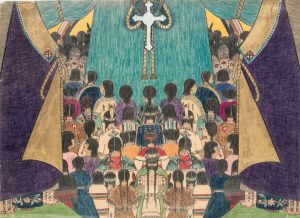
Portion of Mary Sully’s The Indian Church (1938-45), on view in Hearts of Our People: Native Women Artists at the Minneapolis Institute of Art. Collection of Philip J. Deloria.
Native American Women Artists Finally Get Their Due in New Minneapolis Exhibition
Women made ninety percent of the Native American art you see in museums, but you might never know it. (The Art Newspaper)
MFA Bans Two Patrons After Students Of Color Say They Were Subjected To Racist Comments
The incident has sparked a wider conversation about how encyclopedic museums—rooted in European colonialism—can transform into institutions that reflect communities outside their walls. (WBUR)
Related: Racism At The MFA Doesn’t Shock Me. I Grew Up In Boston
Universities Try to Catch up to Their Growing Latinx Populations
Like many US colleges, Indiana University Northwest is seeing a sharp rise in Latinx students—but support for them is lagging. (The Hechinger Report)
Two Transgender Activists Are Getting a Monument in New York
Part of New York City’s effort “to fix a glaring gender gap in public art,” a monument honoring Marsha P. Johnson and Sylvia Rivera will be erected in Greenwich Village. (New York Times)
Four Years of College, $0 in Debt: How Some Countries Make Higher Education Affordable
Read responses from around the globe. (New York Times)
‘There Were Women Working Then, Too’: How Dia Director Jessica Morgan Is Breaking Open the (Male) Canon of Postwar Art
An interview with director Jessica Morgan on her vision for the Dia Art Foundation’s future. (artnet News)
International Review: Heaven and Earth in Chinese Art by Yiqian Wu
posted Jun 04, 2019
Exhibition Review: Heaven and Earth in Chinese Art: Treasures from the National Palace Museum, Taipei, February 2 –May 5, 2019, Sydney, Australia
The following article was written in response to a call for submissions by CAA’s International Committee. It is by Yiqian Wu, a graduate student at the University of Sydney.
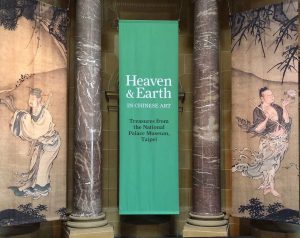
Figure 1. Exhibition banner. The Art Gallery of New South Wales, Sydney, Australia. February 5—May 5, 2019. Photo: Yiqian Wu.
How should we humans perceive our relationship with nature? An ancient Chinese perspective of the human/nature relationship was offered by Heaven and Earth in Chinese Art: Treasures from the National Palace Museum, Taipei (Fig. 1), which was recently exhibited at the Art Gallery of New South Wales, Sydney, Australia. This exhibition offered the viewer a rare opportunity to closely examine eighty-seven Chinese national treasures with the themes of “Heaven and Earth,” “Seasons,” “Places,” “Landscape,” and “Humanity.”
This article focuses on three works of arts drawn from the themes of “Heaven and Earth,” “Seasons,” and “Landscape,” and explores how each one exemplifies the Chinese philosophical concept of tian ren he yi (天人合一), unity or harmony between heaven, nature, and humanity.
1. Humanity is joined with heaven and earth

Figure 2: Tri-Ring symbolizing Heaven, Earth, and Humanity, Ming dynasty (1368–1644 CE), jade, nephrite, outer diameter 4 1/2 in. (11.75 cm). The Art Gallery of NSW, Sydney, Australia. Photo: The collection of National Palace Museum, Taipei.
Under the theme “Heaven and Earth” a jade object titled Tri-Ring symbolizing Heaven, Earth and Humanity (Fig. 2) presented the viewer with the ancient Chinese worldview of human/nature relationships. The three individual rings, representing heaven, earth, and humanity, are interlocked by a mortise and tenon joint, allowing each ring to rotate on its axis line. For instance, this tri-ring constructs a globe when unfolded and becomes three concentric rings when laid flat.
Curator Cao Yin explains that the inner ring represents heaven, as it is carved with the motif of the sun, clouds, and stars. The outer ring, decorated with mountains and oceans, represents the earth. The middle ring, depicting the motif of the dragon to symbolize emperors, represents the human world led by emperors.
The rotation of the tri-ring symbolizes the dynamics of energy flowing and exchanging among three powers of the universe. And the interlocked connection between three rings implies the mutual restraint of power between heaven, earth, and humanity. The arrangement of three rings reflects the ancient Chinese belief that humans mediate between heaven and earth and are the central component of the ecosystem.
2. Humanity adapts to the changes of nature
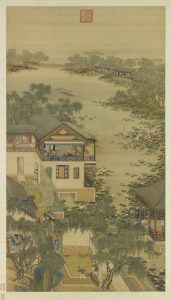
Figure 3: “The sixth month” from The Twelve Lunar Months, Qing dynasty (1644–1911 CE), hanging scroll, ink and paint on silk, 126 x 50 in. (320 × 127.6 cm). The Art Gallery of NSW, Sydney, Australia. Photo: The collection of National Palace Museum, Taipei.
Under the theme of “Seasons,” a scroll painting from the Qing dynasty displays how ancient Chinese people adapted themselves to June, one of the hottest months in the Northern Hemisphere (Fig. 3). Since animals prefer to hide in the shade to avoid the heat of June, this month was also called by ancient Chinese as fu yue (伏月, the month of hiding). Since June is also the season for the blossom of lotus flowers, he yue (荷月, the month of the lotus) was another name for June in ancient China. As the painting shows, people enjoy various recreational activities to reduce the heat, such as enjoying the breeze in a pavilion or going fishing and picking lotus flowers by riding boats on the pond.
Seasonality is a natural phenomenon that signifies the irresistible power of nature in regulating human lives. The ancient Chinese people believed that adapting to the change of seasons could result in a good harvest and personal health. In order to positively respond to nature, they divided twelve lunar months into twenty-four divisions of the solar year in their traditional calendar. Each solar term corresponds to relevant folk customs, including the timing of agricultural activities and recipes for seasonal food therapy. These cultural traditions emphasize the important role of nature in guiding everyday lives of human beings and suggest that people benefit from adapting to seasonal variation.
3. Nature is humanity’s spiritual homeland
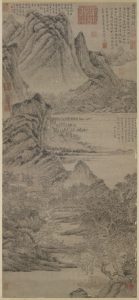
Figure 4: Attributed to Wang Meng (1308–1385 CE), Fishing in Reclusion on a Flowering River, Yuan dynasty (1279–1368 CE), hanging scroll, ink on paper, 51 x 23 in. (129 × 58.3 cm). The Art Gallery of NSW, Sydney, Australia. Photo: The collection of National Palace Museum, Taipei.
Shan-Shui (山水, mountains and water) is a Chinese term for landscape. These two Chinese characters present the essence of the theme “Landscape” in this exhibition. In Chinese culture, mountains and water are not only the key components of natural landscape, but also the spiritual home for literati and recluses.
Liu Yinxing defines recluses as those politically exiled intellectuals living in times of war and regime change, who abandon themselves to the peace and tranquility of natural landscape. Wang Meng’s landscape painting (Fig. 4) portrays a recluse’s dreamland, in which he befriends the mountains and river. As pointed out by Liu Chengzhang, Wang Meng spent decades as a recluse. As a Han ethnic painter living in the Yuan dynasty ruled by Mongolians, Wang Meng possibly regarded himself as a political refugee and sought comforts and transcendence in nature, his spiritual homeland.
As the caption explains, the painting’s poetic imagery, such as chains of mountains, a river, peach blossoms, and a fisherman, were derived from The Peach Blossom Spring (桃花源记), a prose text written by the Six Dynasties recluse and poet Tao Yuanming. In keeping with Tao’s rendering of the ideal world, Wang Meng manifested the seamless fusion of human beings and nature by immersing the body of the human figure within the boundless beauty of nature. The relationship between the tiny human figures and the sublime landscape conveys the human being’s great reverence for nature and expresses Wang Meng’s (the reclusive painter’s) desire of being detached from the mundane world and returning to his spiritual homeland, nature.
In conclusion, the exhibition Heaven and Earth in Chinese Art: Treasures from the National Palace Museum, Taipei presented to a predominantly Western audience three main ways that ancient Chinese people pursued their harmonious relationship with nature: emphasizing that humans live in unison with nature, humans will thrive by responding to seasonal variation, and nature offers humans a spiritual home.
New in caa.reviews
posted May 31, 2019
Michele Valerie Ronnick reviews Posing Modernity: The Black Model from Manet and Matisse to Today by Denise Murrell. Read the full review at caa.reviews.
Jason Nguyen writes about Stones to Stains: The Drawings of Victor Hugo, edited by Cynthia Burlingham and Allegra Pesenti. Read the full review at caa.reviews.
Elizabeth Benjamin explores Gustave Caillebotte: Painting the Paris of Naturalism, 1872–1887 by Michael Marrinan. Read the full review at caa.reviews.
Hazel Clark reviews Pink: The History of a Punk, Pretty, Powerful Color by Valerie Steele. Read the full review at caa.reviews.
News from the Art and Academic Worlds
posted May 29, 2019
Want articles like these in your inbox? Sign up: collegeart.org/newsletter
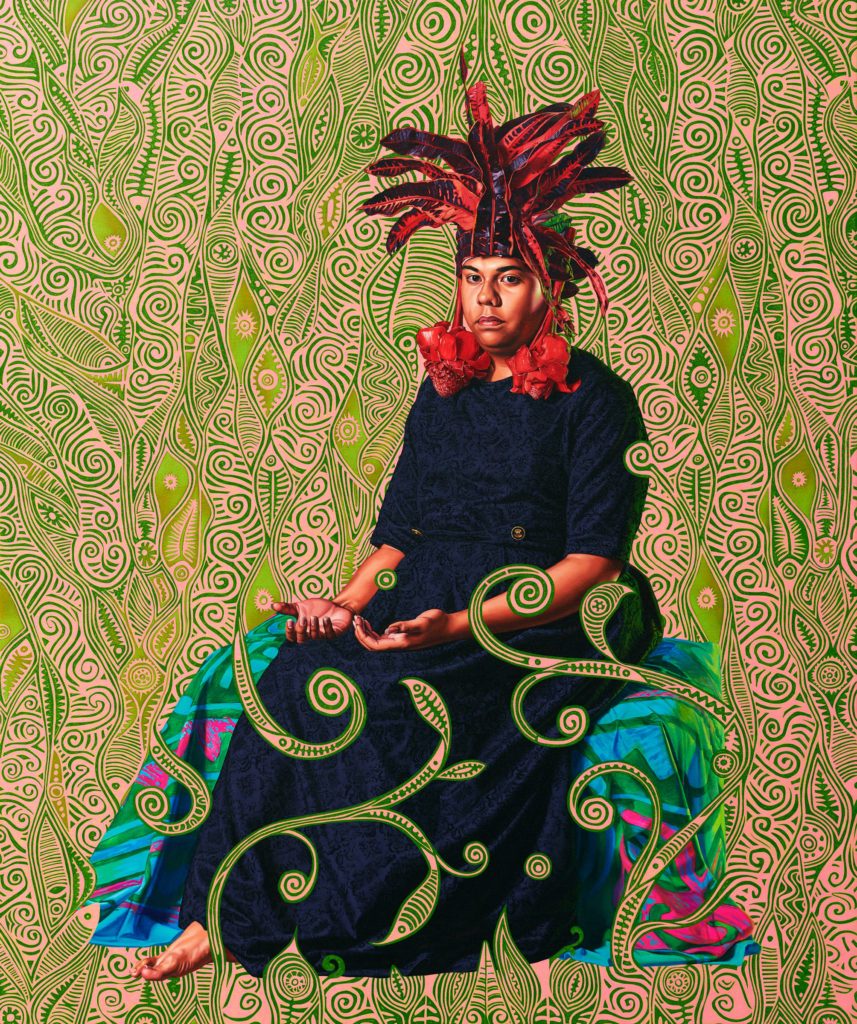
Kehinde Wiley, Portrait of Moerai Matuanui, 2019. Courtesy Templon, Paris & Brussels, © 2019 Kehinde Wiley, via artnet News
Artist Kehinde Wiley’s Latest Paintings Are a Progressive Riposte to Paul Gauguin’s Primitivist Portraits of Tahitians
“My job as a looker, as a creator, as a thinker, is to somehow imagine a newness within that bankrupt vocabulary.” (artnet News)
Last-Minute Tenure Threat
A professor’s future at the University of Mississippi was uncertain as the statewide governing board debated his social media record. (Inside Higher Ed)
Decolonizing and Diversifying Are Two Different Things: A Workshop Case Study
A helpful explainer focused on decolonial pedagogical tools, adapted from a CAA 2019 workshop. (Art History Teaching Resources)
Want to Help Struggling College Students? Support the Low-Paid Staff Who Teach Them
A case for why untenured faculty are a 2020 campaign issue. (ThinkProgress)
Craft, Queer Art, and the Canon: Sheila Pepe on Moving Through the Margins
An interview with former CAA board member Sheila Pepe on art, queerness, and craft. (Artspace)
Smarthistory’s Expanding the Renaissance Initiative
A new initiative will work towards art histories that “do not present European art as superior and help to weaken the binary western/non-western paradigm.” (Smarthistory)
New in caa.reviews
posted May 24, 2019
Lisa Claypool reviews Shadow Modernism: Photography, Writing, and Space in Shanghai, 1925–1937 by William Schaefer. Read the full review at caa.reviews.
Katherine Shingler writes about Matisse’s Poets: Critical Performance in the Artist’s Book by Kathryn Brown. Read the full review at caa.reviews.
Yang Wang discusses The Art of Resistance: Painting by Candlelight in Mao’s China by Shelley Drake Hawks. Read the full review at caa.reviews.
Frances Blythe reviews Edvard Munch: Between the Clock and the Bed, edited by Gary Garrels, Jon-Ove Steihaug, and Sheena Wagstaff. Read the full review at caa.reviews.
CAA Assembles Working Group Against Harassment and Assault
posted May 23, 2019
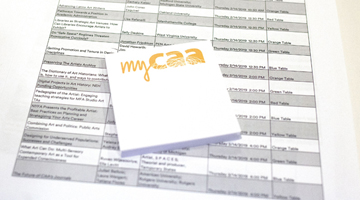 Motivated by an Idea Exchange roundtable held at the 2019 Annual Conference in New York, CAA announces the formation of a Working Group Against Harassment and Assault, aimed at addressing issues related to sexual harassment and power dynamics at the Annual Conference.
Motivated by an Idea Exchange roundtable held at the 2019 Annual Conference in New York, CAA announces the formation of a Working Group Against Harassment and Assault, aimed at addressing issues related to sexual harassment and power dynamics at the Annual Conference.
The working group is made up of CAA members from around the country, many of whom have experience effecting change at their own institutions in this arena. The working group members are:
Sonia De Laforcade, Princeton University
Claire Kovacs, Binghamton University Art Museum
Karen Leader, Florida Atlantic University
Daniel Quiles, School of the Art Institute of Chicago
Leanne Zalewski, Central Connecticut State University
The working group will meet several times over the summer of 2019 to formulate suggestions to the Board of Directors. These recommendations are intended to aid CAA in addressing the systemic and structural dynamic of power and privilege that makes space for predatory behavior at the Annual Conference.
News from the Art and Academic Worlds
posted May 22, 2019
Want articles like these in your inbox? Sign up: collegeart.org/newsletter
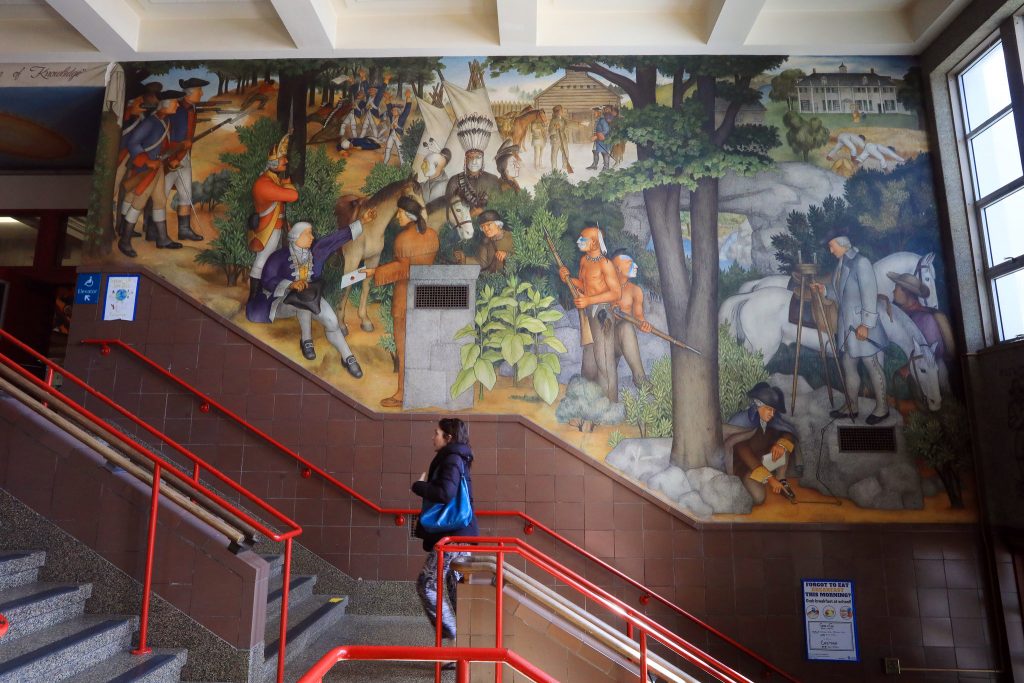
One of the 13 murals that make up “The Life of Washington” at George Washington High School in San Francisco. Photo: Jim Wilson/New York Times
These High School Murals Depict an Ugly History. Should They Go?
The San Francisco school board will make a decision about the thirteen murals that make up “The Life of Washington” this spring. (New York Times)
Western Museums Have a Surplus of Art by White Men. Now Some Are Selling It Off to Correct Their Historical Biases
The work of three North American museums may offer a blueprint. (artnet News)
CalArts Students Collaborate with Cooper Union Alumni in Their Fight Against Rising Tuition
After CalArts announced a tuition hike in March, students have been participating in a bigger conversation around the transparency and values of arts institutions. (Hyperallergic)
Money, Ethics, Art: Can Museums Police Themselves?
“In the space of barely a year, the very foundations of museums—the money that sustains them, the art that fills them, the decision makers that run them—have been called into question. And there’s no end to questioning in sight.” (New York Times)
How to Build How to Build a College Art Collection on a Budget of Fumes
A great resource from Hudson County Community College, which has grown its collection to over 1,200 artworks since 2006. (RAAMP)
Why Female Artists Have Used the Self-Portrait to Demand Their Place in Art History
Female self-portraiture has changed dramatically over time, but it continues to transgress expectations. (Artsy)
An Interview with Jordana Moore Saggese, Editor-in-Chief of Art Journal
posted May 21, 2019

Photo by Sarah Deragon, Portraits to the People
Jordana Moore Saggese is an Associate Professor of American Art at the University of Maryland, College Park and the current Editor-in-Chief of Art Journal, CAA’s publication focused on twentieth- and twenty-first-century art history. Trained as an art historian, Saggese’s work focuses on modern and contemporary art with an emphasis on the expressions and theorizations of blackness. She was previously Associate Professor of Contemporary Art & Theory at California College of the Arts.
Joelle Te Paske, CAA Media and Content Manager, corresponded with her this month to learn about how she came to do the work she does, and her aspirations for the journal and the field beyond.
Joelle Te Paske: Thanks for taking the time for our interview, Jordana. So to begin, where are you from originally? What pathways led you to the work you’re doing now?
Jordana Moore Saggese: I am originally from Nashville, Tennessee. I attended Vanderbilt University, as a first-generation college student, for my undergraduate degree, and fell into an art history major at the very last moment. In fact, the summer before my senior year I suddenly realized that every opportunity I had to take an elective unit during my time at Vanderbilt I had chosen an art history class. The art history classes I took with my mentor Leonard Folgarait were truly inspiring. He encouraged his students (even those like me, who had very little knowledge of art history) to consider the work of artists as a response to the values and ideas of society, which in turn are determined by historical conditions. I can still remember his lecture on Dada, which was really the turning point for me. It was at that moment that I realized art was not something meant only for the elite; art could also be a form of rebellion. Although I had never been inside an art museum before my time as an undergraduate, Dr. Folgarait, and other faculty there, encouraged me and asked me to think deeply about the stakes of representation and introduced me to a range of objects across multiple continents and chronologies. With their encouragement, I decided to declare a major in art history and apply for graduate school my senior year.
This meant that I had to take the two-semester survey course as a senior, which fundamentally shifted the way I think about teaching those courses.
I can still remember my shock, sitting in a huge lecture hall, listening to someone drone on about a mostly white, male, heterosexist art history. I was wholly unprepared to memorize a seemingly endless stream of images. I finished the courses but this was not the art history that I was used to. That experience, of coming in almost backwards to the discipline, highlighted two main issues that still impact my teaching and research today.
First, how can we give students the very best introduction to the discipline—one that reflects the deep inquiry and the collaboration that was so intrinsic to my experience in the upper-division courses?
And second, whose art history are we teaching? That is, to what extent has a colonialist logic pervaded much of modern art history and what can I do—in my teaching and research—to undo that logic? I have been acutely aware of the ways in which art history has tended to exclude diverse perspectives and histories and much of my own work involves complicating those dominant narratives.
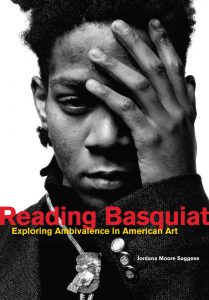
Saggese’s first book, Reading Basquiat: Exploring Ambivalence in American Art, was published by UC Press in 2014.
JTP: I love these questions as a fundamental starting point—not supplement—to the question of teaching art history. You were previously on the faculty at the California College of the Arts, and are now at University of Maryland, College Park. How has the transition been?
JMS: Teaching at an art school for the first ten years of my career was a wonderful experience in that it gave me direct and constant access to working artists. Thanks to my colleagues I was able to stay current in the field—a challenge for any historian of contemporary art—and my students constantly challenged me to make the history of art come into real time and space. CCA was also a site of experimentation, where students and faculty were willing to challenge one another, to wrestle openly with difficulty, and to fail. I have tried to bring those values to my teaching at Maryland as well. I have found the students and faculty at College Park to be deeply invested in their individual fields of interest but also in the discipline as a whole. There has also been tremendous support for my research practice, which has been a great benefit to making this transition.
JTP: As a Basquiat scholar, what is something you wish more people know about the artist?
JMS: I wish that more people considered the extent to which Basquiat’s celebrity status has threatened to eclipse his critical significance. My main project has been, and continues to be, writing this artist into the history of American art. I would also add that working on Basquiat presents extreme challenges for a researcher. There is no public archive of his work and approximately 85-90% of the paintings and drawings are in private collections (and I might mention, constantly being sold). This means that in order to see the works, one must shake a lot of hands, charm a lot of people, and knock on lots of doors. Working on Basquiat requires a thick skin, as I am often embroiled in territorial battles or even ignored. I also spend a lot of money traveling to see exhibitions so that I might glimpse the works in person. So, it’s not your typical research project!
JTP: I can only imagine the challenges that presents in pushing research forward—it’s far from a straightforward dive into the archives. What are you working on currently?
JMS: My second book, The Basquiat Reader: A Critical Anthology will be published by the University of California Press in 2020. The Basquiat Reader is a comprehensive sourcebook on Basquiat for both general audiences and advanced readers. Through a combination of interviews with the artist, criticism from the artist’s lifetime and immediately after, previously unpublished research by me, and a selection of the most important critical essays on the artist’s work, The Basquiat Reader provides a full picture of the artist’s views on art and culture, his working process, as well as the critical significance of his work both then and now. It is my hope that by giving more people access to the primary sources, we will see more scholarship on this artist.
My new book project considers representations of black male athletes as a point of entry to thinking about how black men have historically been presented to (and positioned by) the white mainstream public as a fear/fantasy. More specifically, I examine the ways in which black masculinity is constructed in the visual realm, and how the black athletic body can shape the moral, physical, and social position of African American men more broadly. Over five chapters I analyze key moments in the history of the sport, prominent black athletes and their representation in the American popular press and visual art.
JTP: That is such important work, especially as those constructions persist and accelerate in contemporary visual culture. What are your hopes for Art Journal during your tenure?
JMS: During my tenure I would like to continue to build on the global reach of the publication—in terms of both content and readership. I mean global here as something more than a keyword to signal “diversity.” I use global to signal an interconnected conversation between Europe, Asia, Africa, Latin America, South America, the Pacific—rather than a series of isolated references to an “other.” I want to think of how the perspective of modern and contemporary art from Mumbai or even Beijing connects to as well as lives separate from the touch-points of America and Europe. This is something that I began to explore in my edited forum, “Diversity and Difference,” published in Art Journal in 2016—that is, how can we think beyond the paradigm of margins and center?
I am also hoping to increase a direct engagement of artist members via the introduction of new features, such as “Object Lessons,” which will first appear in Fall 2019. This is an opportunity for artists to consider a specific object of visual culture that has directly impacted or influenced their own practice. I am also increasing the diversity of artists that we publish in Art Journal. For example, every artist project for issues published in 2019 was developed by a woman of color.
Finally, I want to highlight the role of the journal as a forum for professional conversations. Readers can expect to see short essays on fair use, censorship, and the white supremacist logic of art history—topics that typically are buried in whispers. I see Art Journal as a place where these difficult conversations and issues come to light. Many readers of Art Journal are also teachers, and I hope to bring more focus to issues of pedagogy over the coming years of my tenure as Editor-in-Chief.
JTP: It’s exciting to see the direction you are bringing to it. What are some of your other arts-related recommendations at the moment?
JMS: I have really enjoyed seeing the conversation around #POCarthistory (started by Ananda Cohen-Aponte [who recently took over CAA’s Instagram]) develop on Twitter over the last months. As someone interested in our current moment I am constantly reading Hyperallergic and I have found the resources on the website of the Association for Critical Race Art History very important to my own pedagogical development. I am currently reading The Painter’s Touch by Ewa Lajer-Burcharth.
JTP: Do you have a favorite exhibition you’ve seen recently?
JMS: This year I really enjoyed the shows by Jack Whitten (Met Breuer) and Nari Ward (New Museum), but I am still reeling from the show of new paintings by Lynette Yiadom-Boakye (Under-Song for a Cipher), which I saw at the New Museum two years ago. That show left me speechless.
The Spring 2019 issue of Art Journal is now online.
Not a CAA member? Join today and begin exploring immediately.
CIHA World Congresses in Florence and São Paolo
posted May 20, 2019
A SESSION AT THE 2019 CAA CONFERENCE INTRODUCED TOPICS FOR The 35th World Congress, Parts 1 and 2, of the Comité International d’Histoire de l’Art (CIHA)
David Roxburgh, Prince Alwaleed Bin Talal Professor of Islamic Art History at Harvard University, contributed the following article about the next two world congresses organized by CIHA so that CAA members can consider attending and participating. Professor Roxburgh is the current president of the National Committee for the History of Art (NCHA), the US affiliate of CIHA that connects the international committee’s work with CAA and its members to sustain the global exchange of art historical work.
Motion: Transformation and the Life of Artworks, the session sponsored by NCHA at the 2019 CAA Annual Meeting in New York, brought together scholars from the organizing committees of Italy and Brazil who will share the quadrennial 35th CIHA World Congress. The themes are Motion: Transformation, taking place in Florence in 2019, and Motion: Migrations, taking place in São Paolo in 2020. The CAA panelists comprised Marzia Faietti (Gallerie degli Uffizi, Florence), Claudia Mattos Avolese (Universidade Estadual de Campinas, São Paulo), Marco Musillo (Kunsthistoriches Institut, Florence), and Christina Strunck (Friedrich-Alexander-University, Erlangen-Nürnberg), with Jesús Escobar (Northwestern University) serving as respondent and Nicola Courtright (Amherst College) as chair. The thoughtful remarks of Professor Jesús Escobar are included here for those who could not attend the panel.
The CIHA Congress in Florence will be held September 1-6, 2019, and in São Paulo September 13-19, 2020. The final program for Florence is now available.
For the São Paulo program, a call for paper submissions is available here.
NCHA recently awarded 12 travel grants to graduate students from PhD programs in the history of art from across the United States to attend the 35th CIHA Congress in Florence. A competition will be announced early in 2020 for graduate students planning to attend the CIHA Congress in São Paulo. We hope to see many art historians working in the US in Florence and São Paulo.



